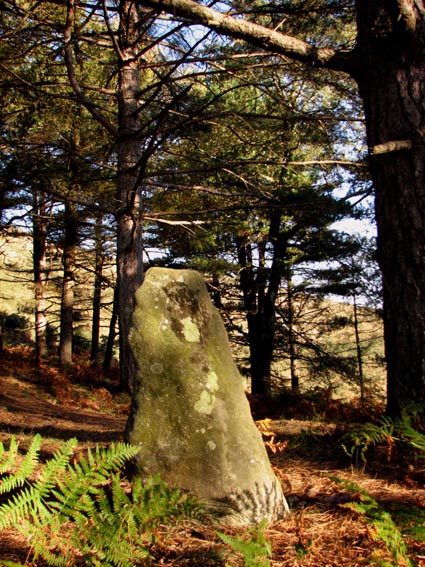 first to cover a certain distance, usually a thousand kilometers, or perhaps miles in the English version. Cards marked from 25 to 200 kilometers in some of the earlier editions of the game showed an outline of the stone or cement bornes routières (sometimes called bornes kilométriques) or “distance markers” which used to be quite common along French highways. The old bornes seem to be disappearing from the countryside, though, or at least changing form. Still, we have spotted different varieties of the markers both on and off the beaten path in Provence.
first to cover a certain distance, usually a thousand kilometers, or perhaps miles in the English version. Cards marked from 25 to 200 kilometers in some of the earlier editions of the game showed an outline of the stone or cement bornes routières (sometimes called bornes kilométriques) or “distance markers” which used to be quite common along French highways. The old bornes seem to be disappearing from the countryside, though, or at least changing form. Still, we have spotted different varieties of the markers both on and off the beaten path in Provence.
Traditional bornes--short, red or yellow on the top and white on the bottom, one might say "tombstone-like" structures--can sometimes be found in out-of-the-way places, like on small departmental roads leading into Bédoin. They often contain information not only about the distance to a given location, but the route number and altitude as well. Most of these are in quite poor condition and very often the distances indicated have become antiquated because of changes in the road systems. The latest renditions, which are metallic or plastic rectangles on metal posts, clearly lack the charm of conventional bornes.

Looking into the history of these markers, I expected to find that they dated from the era of the Roman Empire. In fact, there are vestiges of stone markers near old Roman roads in France. What surprised me was that the idea of using large stones as markers might be much older. Certain archeologists hypothesize that some of the thousands of prehistoric menhirs found on French soil today might have once served to indicate property lines (bornes limites des propriétés) or as directions to follow. At any rate there are perhaps hundreds of different styles of bornes in France today, some even commemorating events of the past. The town of Maisse, in the north, west of Fontainebleau, celebrated its liberation by American troops towards the end World War II by creating a specially designed borne.

Today, while tourists might never see an old distance marker on their travels through France, they do have the opportunity to buy plastic keychains or small replicas of traditional bornes as souvenirs. The word borne itself, meanwhile, has not disappeared. It has been adapted to meet the needs of the twenty-first century and has come to signify any average sized, round-topped machine, such as an ATM or an automatic ticket dispenser at the train station or airport.

No comments:
Post a Comment